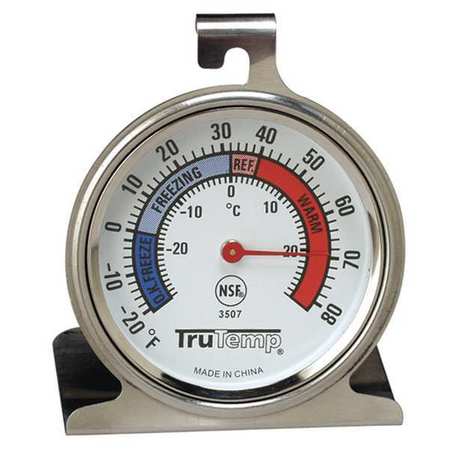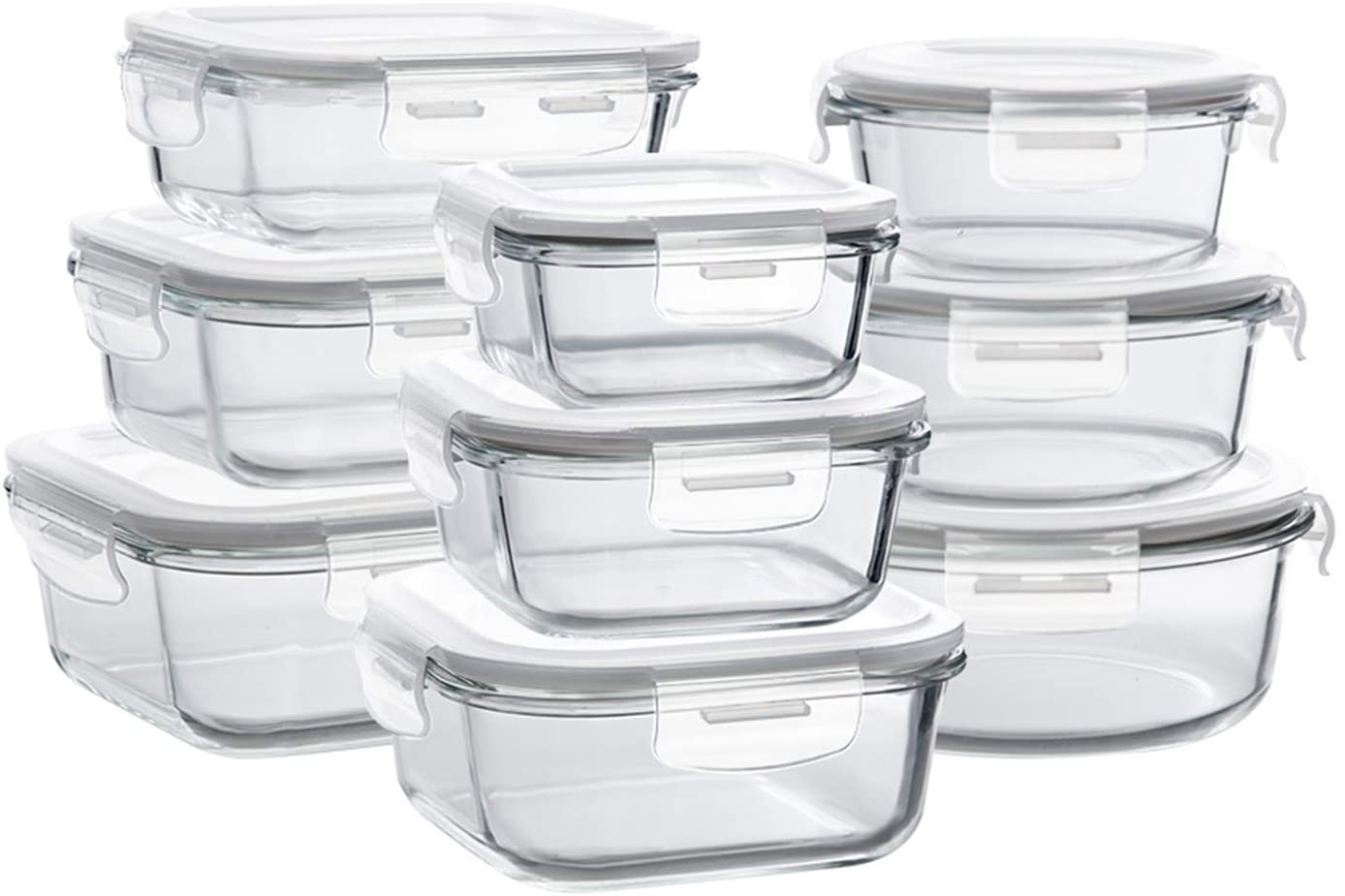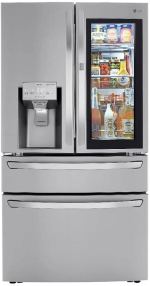How To Keep Food Fresh
For as Long as Possible!
It's important to know how to keep food fresh for as long as possible, otherwise, you're simply throwing money away.
There's more to it than meets the eye. You can't just jam your food into your refrigerator and call it a day.
You need to strategize a bit about where to store it -- whether you should freeze it, refrigerate it, put it on a shelf or into the door compartments.
Ultimately, by keeping your food fresh for as long as possible will minimize the number of trips you take to the grocery store as well as save you a boatload of money over the long haul.
So, let's go through some specifics on how best to tackle keeping your food fresh:
How To Keep Food Fresh For Longer
Set the Right Refrigerator Temperature
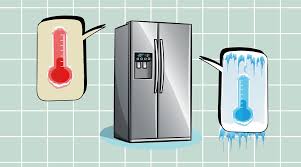
There's a fine line between too cold and too warm. But the "Goldilocks Zone" for a refrigerator is about 37F.
(I would type a degree symbol here, but I honestly don't know how.)
When food temperature rises above 40F, bacteria starts to grow and wonky things can happen. Meaning, spoilage.
The proper temperature for your freezer is 0F. (Again, assume there's a degrees symbol there.) This will keep your food thoroughly frozen.
Maintaining a constant temperature is crucial to keeping your food fresh.
How to Keep Food Fresh:
Use a Refrigerator Thermometer
Keep in mind, that even though most refrigerators nowadays have a hi-tech looking control panel that seems to give you complete temperature control, that might be a bit deceiving.
Many refrigerator controls just aren't all that accurate. There can be a significant variance from what the refrigerator says, versus what the temperature actually is.
To help minimize this, we recommend purchasing a refrigerator thermometer.
These are cheap ($5-$10) and will give you a better idea if your refrigerator is maintaining a constant temperature to help you keep your food fresh for as long as possible.
You can also use the refrigerator thermometer to help identify cold and warm spots within your refrigerator. Because unfortunately, there's often a noticeable variance from one part of the refrigerator to another.
Every refrigerator manufacturer typically has their own range and recommendations for the settings to make sure that the temperature you see, is the temperature that is.
The recent addition of Smart Refrigerators into the marketplace has made this trend toward temperature accuracy that much more prevalent.
How to Keep Food Fresh:
How to Store Leftovers
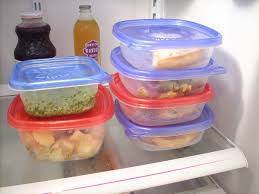
When it comes to how to store leftovers there are some basic rules:
1) Have a consistent place in your refrigerator where leftovers are typically stored.
Usually, we recommend putting them toward the front and on a shelf in your eye-line.
This will better insure that you don't forget about them and are more likely to use your leftovers rather than letting them go bad.
You might also label all your leftovers as it's a good habit to get into when considering how to keep food fresh for as long as possible.
2) Consider investing in some glass storage containers with locking lids.
These will not only help keep your leftovers fresh for as long as possible, but they'll make for easy reheating.
Glass is a healthier choice than most plastic containers, because there's less of a chance of leaching of chemicals into your food.
Not all plastic storage containers are created equal and some of the cheaper brands aren't even BPA Free. If you don't know what that means, you should check out some of these links.
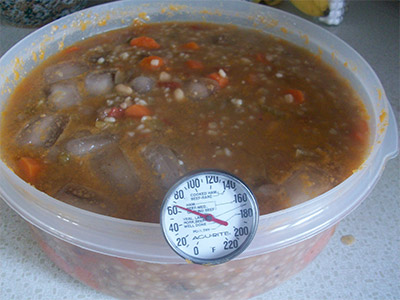
3) You want to be sure that you're not putting HOT food directly into the refrigerator.
This is NOT how to keep food fresh.
This will cause bacteria to grow and could cause food borne illnesses.
Trust me, between the vomiting and diarrhea you might experience, you'll never make this mistake again.
Bring any hot foods to room temperature before you put them away. This will insure that you minimize the chance for bacterial growth.
And by the way, we realize the pic we chose was probably not the most appetizing considering we just used the words vomit and the big D. So, we apologize for that. :)
Using Your Crisper Drawers:
Keep Your Produce Fresh For Longer
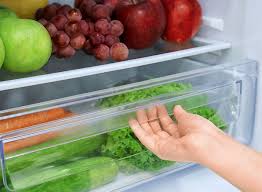
To help keep your produce fresh for as long as possible make sure you utilize your crisper drawers.
There are usually settings on these drawers to help guide you on the HUMIDITY LEVEL.
But what the hell does that mean? Which foods do best in which humidity level? How to keep food fresh using humidity levels? Here's a little guide:
LOW HUMIDITY: This setting is for foods that ripen quickly. Examples are apples, grapes, peaches, mushrooms, melons, peppers, avocados and so on.
HIGH HUMIDITY: This setting is best for foods that are prone to wilting like broccoli, leafy greens, cauliflower, green onions, carrots, and the like.
Pretty simple, huh? It's usually best to set one drawer for LOW and another for HIGH. Using the crisper drawers properly will keep your produce fresh for as long as possible.
How To Keep Food Fresh For Longer:
How to Store Eggs and Meat
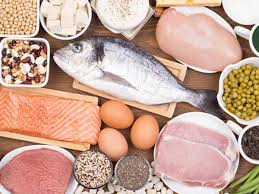
When it comes to eggs and meat, these are typically the most perishable of all your food items.
They're also usually the most expensive, so you really don't want to botch the storing of these foods.
We know some refrigerators have a built in Egg Container in the door, but honestly, ignore these.
The door (as you'll see below) is usually the warmest part of the refrigerator and not a place for perishables. When thinking about how to keep food fresh for longer, consider the coldest part of your refrigerator.
The lowest shelf in your refrigerator is usually the coldest place in your refrigerator. (Again, use your handy refrigerator thermometer to verify this!)
Put your raw meats and eggs here. This will insure that your most perishable items stay as fresh as possible.
TIP: You might also consider putting a tray under any raw meat packages so that if any of the juices manage to seep out, they'll land on the tray and not cause you the headache of cleaning chicken juice out of your crisper drawer. (Uh yeah, we've been there.)
How to Keep Food Fresh for Longer!
What to store in the Refrigerator Door
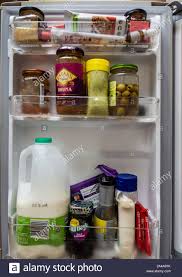
Okay, so what about the refrigerator door?
Considering this is usually the warmest spot in your refrigerator, we recommend storing items here that aren't so sensitive to temperature variances.
We know a lot of refrigerator companies like to tout that their doors have a space for milk gallon storage, but what they don't tell you is that storing your milk here is likely to shorten its life by as much as a third.
So what do you store here?
Condiments, butter, juice, jams, olives, pickles, are some thoughts.
TIP: Be careful with cream based salad dressings as consider them more like milk.
How to Keep Food Fresh for Longer:
What NOT to Store in Your Refrigerator!

So, just as there are many items that require refrigeration, there are some items that perish much faster when put in the refrigerator.
Some of these aren't as obvious as you might think, so we've compiled a short list below to help you determine what goes in the fridge, versus what stays on the counter:
- Bananas
- Tomatoes
- Bread (Some people refrigerate bread to extend the "best by" date, but know that the bread might begin to deteriorate even if it doesn't necessarily go bad.)
- Potatoes
- Onions
- Coffee
- Garlic
- Cake -- Great, now we want cake.
How To Keep Food Fresh - Summing Up
Your refrigerator is a tool and if used properly, it will help you keep your food fresh for a very long time.
Use the specific compartments that are made for each type of food (except the egg divots) to maximize the freshness of your foods.
Make sure you LABEL your foods with a date so you know when you put them in your refrigerator.
We will often write the expiration date of the foods we buy on the package to avoid having to constantly look at the small print over and over.
TIP: You also want to be sure to ROTATE the items in your refrigerator when you purchase more than one and be sure to store LIKE ITEMS TOGETHER.
This will keep you from forgetting about the first one you bought.
Also, last and final piece of advice on how to keep your food fresh for as long as possible:
TIP: Avoid putting anything on top of or too close to the air vents within the refrigerator.
Doing this will not only block the air flow within your refrigerator and keep it from running at optimal levels, but it might also freeze your foods making them inedible. Unless of course you're a penguin.
But you're not a penguin, are you. :)
COVID-19 Update
With Covid-19 ravaging our world, we thought it was important to update this article a bit.
You have to be careful not to overstock your refrigerator.
By doing so, you not only block the air flow of your fridge which hinders its ability to function, but your food items will likely not have any kind of consistent temperature and will spoil that much faster.
You might consider purchasing a spare refrigerator or even a chest freezer if you feel the need to have extra food items on hand.
Recent Articles
-
Top 10 Refrigerators 2025 - Editor's Picks and Reviews
Jun 24, 25 03:58 AM
Discover the Top 10 Refrigerators 2025. Our editors rank the best models for every budget, kitchen size and style -- and help you find the best price. -
LG, Bottom Freezer, LDC22720ST
May 02, 24 01:00 AM
Bought an LG Bottom freezer refrigerator from a well known explanation point department store. And purchased the 10 year warranty for major components. -
Is it safe to set a full size refrigerator on carpet?
Jan 18, 24 05:18 PM
I have a full size refrigerator with top freezer. Is it safe to run it setting on a carpeted floor, if not what can I put under it? The unit is brand

